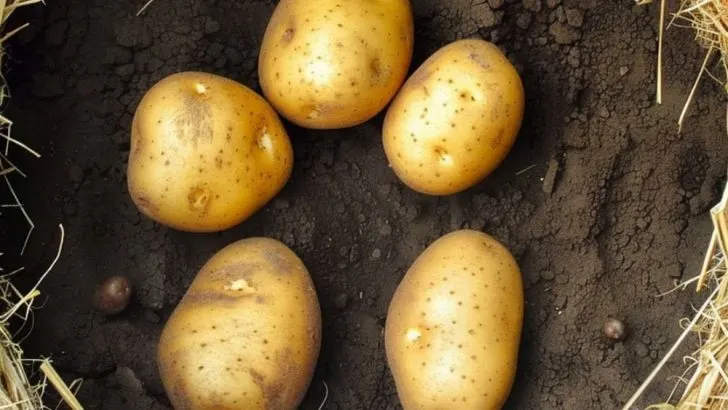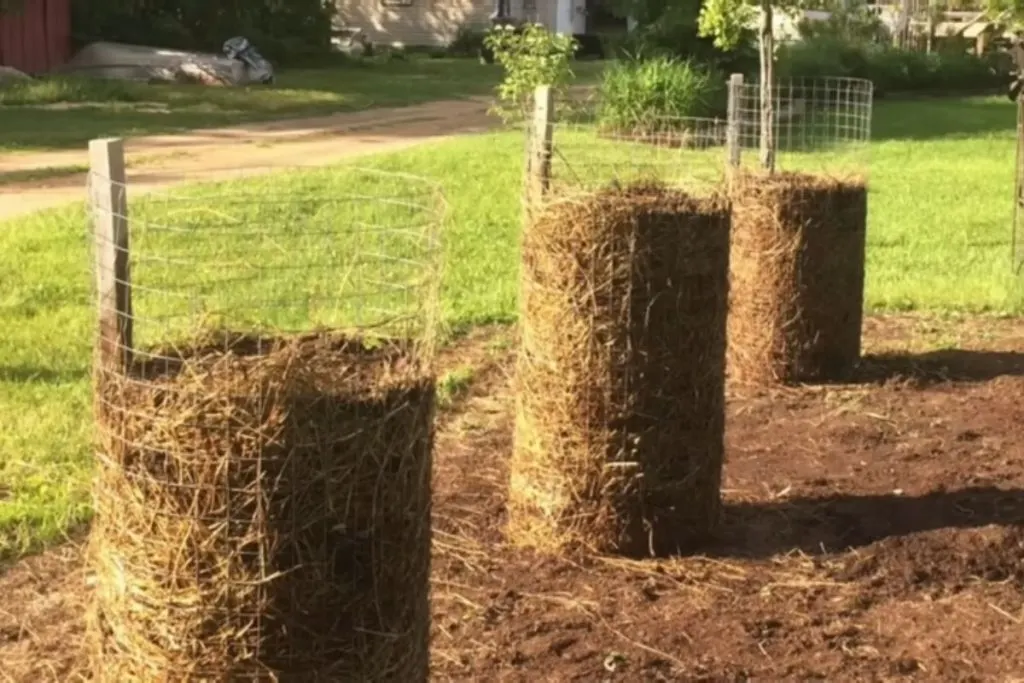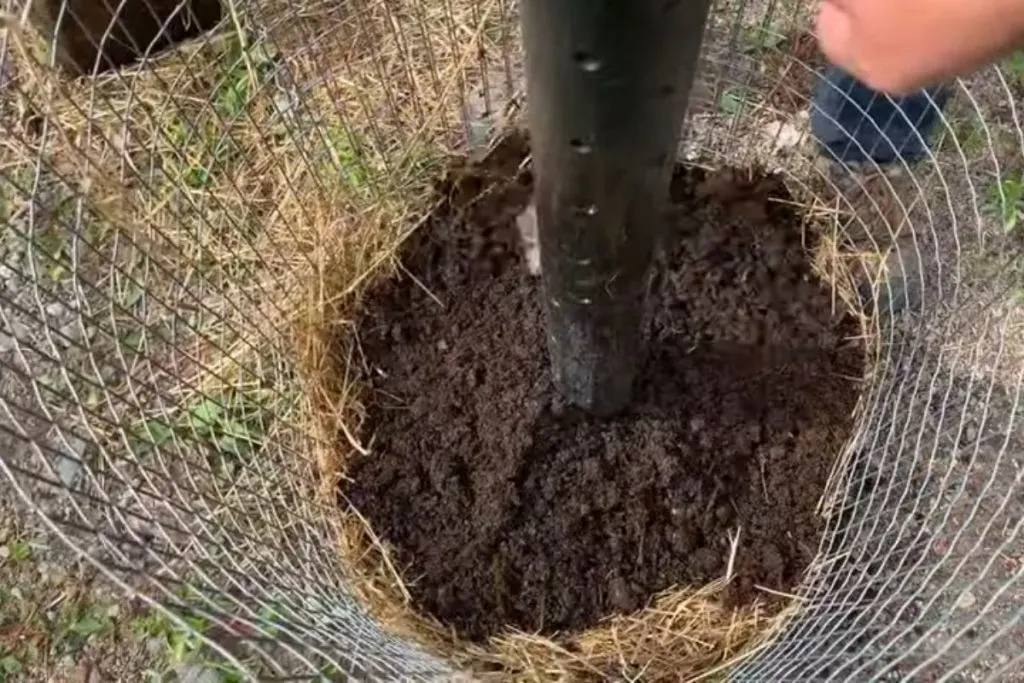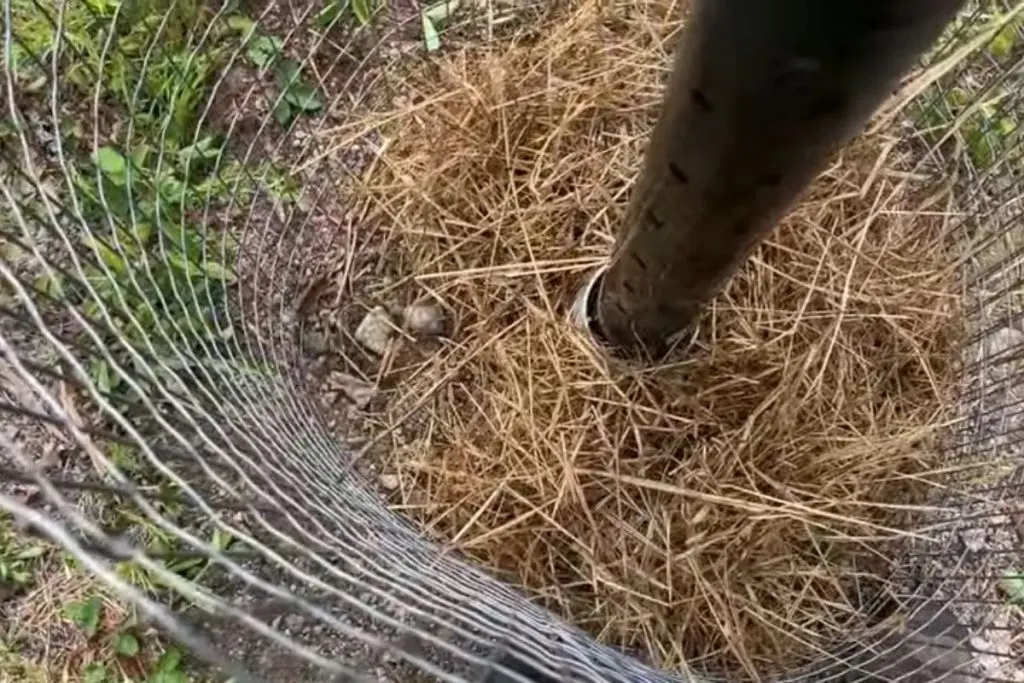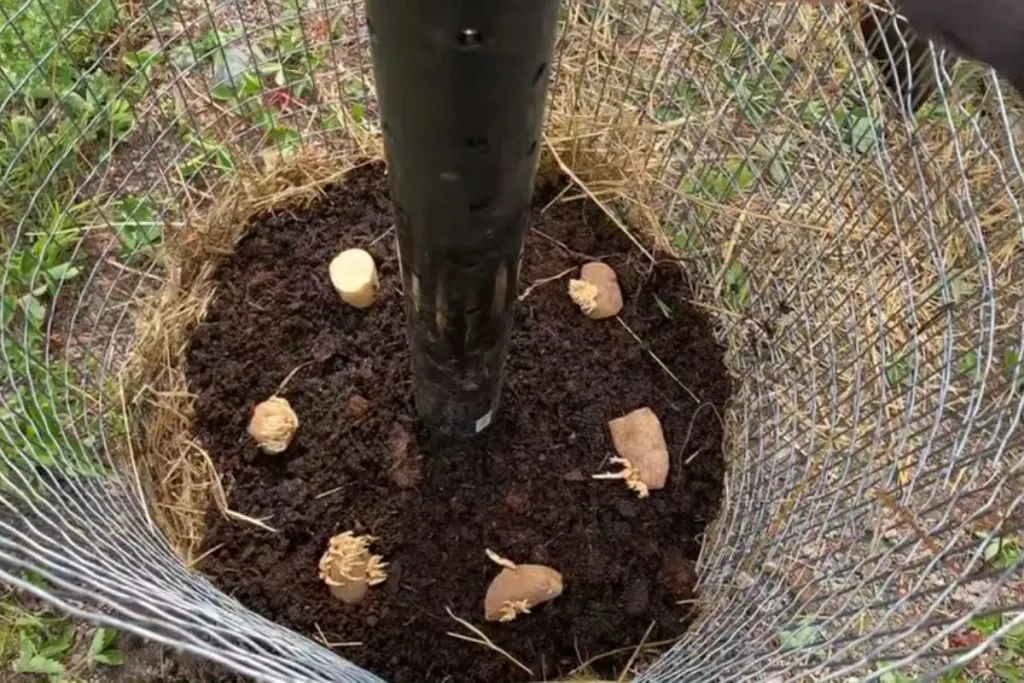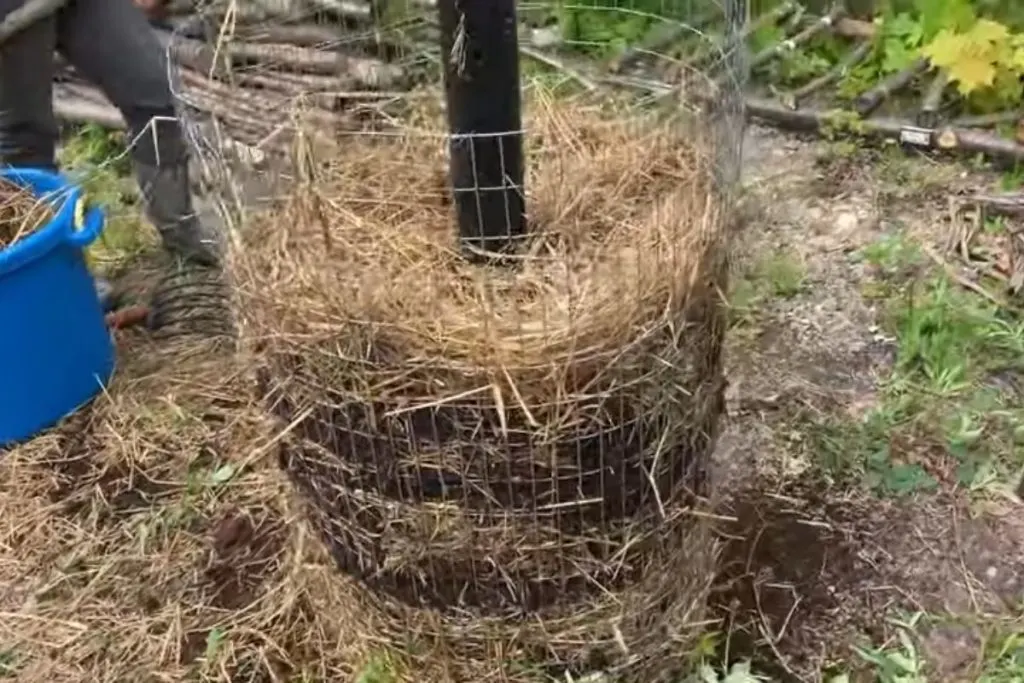If you’re someone who consumes a lot of potatoes, this DIY project is perfect for you. With minimal effort, you can build a potato tower that will keep you and your family well-fed for weeks. This easy afternoon project not only requires little maintenance but also ensures a bountiful harvest throughout the growing season.
Even better, you can enjoy fresh potatoes all year long by planning your planting strategically. Start a tower in spring for a summer harvest, another in summer for fall, and a final one in late summer for a crop that lasts into early winter. These towers will stay warm and moist until November, providing your family with a consistent supply of homegrown potatoes.
Find the Perfect Spot
To get started, choose a sunny location in your garden or yard. Potatoes need at least 6 to 8 hours of sunlight daily to thrive. Prepare the site by clearing away any weeds and debris.
Build Your Tower
Construct a cylindrical tower using wire fencing or mesh. The tower should be about 24 to 36 inches in diameter and 36 to 48 inches tall. This height allows the potatoes to grow vertically, maximizing yield in a small area.
Line the Tower with Straw
Start by lining the bottom of the tower with a layer of straw to improve ventilation and drainage. Then, add about 12 inches of nutrient-rich soil on top of the straw. Use high-quality soil or enrich it with compost to provide the potatoes with the nutrients they need.
Plant Your Potatoes
Place the seed potatoes, which can be small whole potatoes or cut pieces with at least two eyes each, about 3 to 4 inches from the inner edge of the tower. Space them about 5 inches apart to give each plant enough room to grow without overcrowding.
When selecting seed potatoes, consider using certified disease-free varieties for the best results. If cutting larger potatoes into pieces, allow them to dry and form a callus over the cut surfaces before planting. This helps prevent rot and disease.
Fill the Tower as Plants Grow
As the potato plants grow, continue adding layers of straw and soil, ensuring there’s always enough room for the plants to develop.
Keep building up the tower as the stems grow taller, which encourages the potatoes to form along the buried stems. This layering method can significantly increase your yield in a small area.
Watering Tips
Consistent watering is essential for a successful potato tower. Keep the soil evenly moist but avoid overwatering, as too much water can lead to rot.
A good way to check soil moisture is by sticking your finger about 2 inches into the soil. If it feels dry, it’s time to water. It’s best to water early in the morning or late in the afternoon to reduce evaporation and give the plants time to absorb moisture.
Adding a mulch layer on top can help retain moisture and suppress weeds, reducing the need for frequent watering.
Harvest Your Potatoes
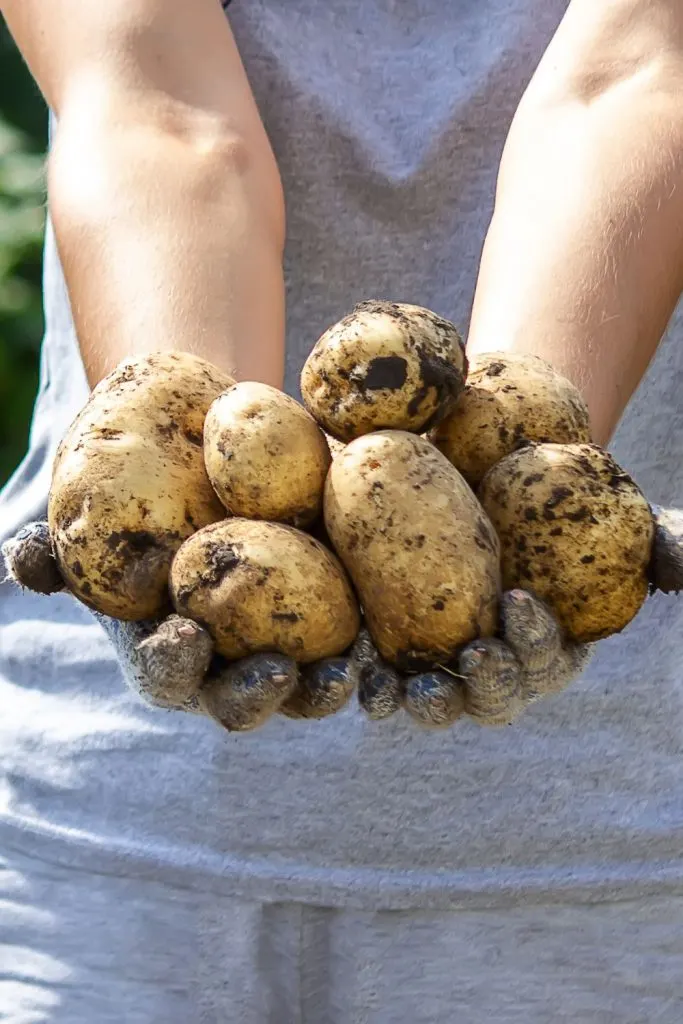
After about three months, your potato plants should be ready for harvest. To harvest, start from the bottom of the tower.
Carefully remove the straw and soil while digging out the potatoes. Be gentle to avoid damaging the potatoes during harvest. After harvesting, cure the potatoes in a cool, dark place for a few days to toughen their skins, which helps them store longer.
Year-Round Harvest with Succession Planting
To ensure a continuous supply of fresh potatoes, practice succession planting. Start one potato tower in the spring for a summer harvest, another in mid-summer for a fall harvest, and a final tower in late summer for an early winter harvest.
Succession planting not only extends your growing season but also optimizes garden space and keeps a steady supply of fresh produce on hand. Consider companion planting or rotating your crops each season to maintain soil health and reduce the risk of pests and diseases.
Reap the Rewards of Your Potato Tower
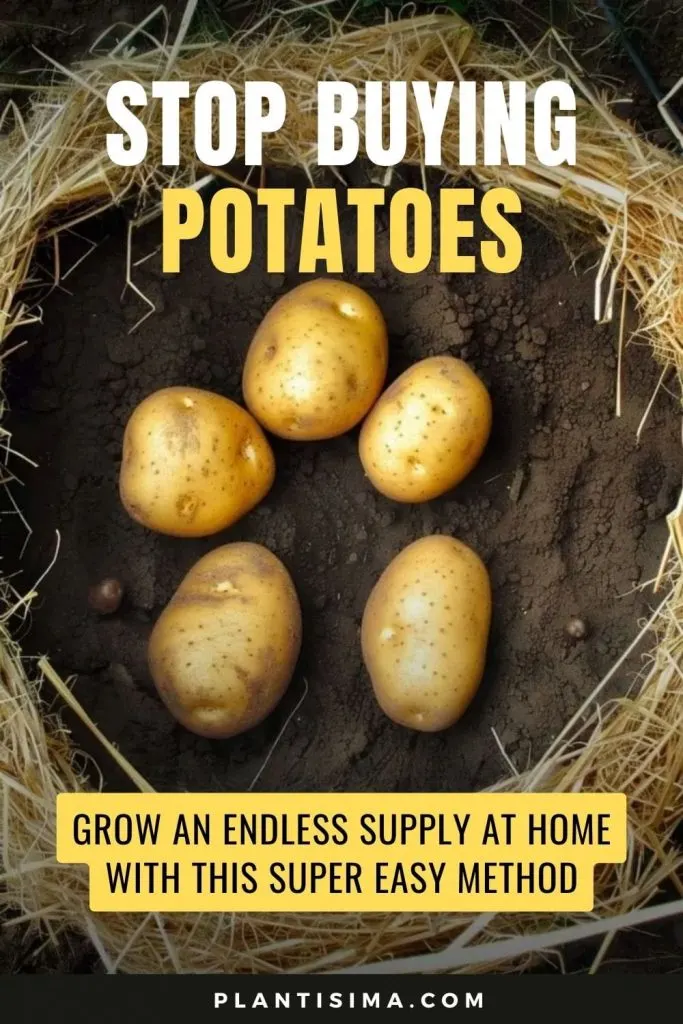
Growing potatoes using this tower method is a simple, effective way to ensure a steady supply of one of the most versatile and beloved vegetables.
Whether you’re a seasoned gardener or a beginner looking for a rewarding project, this method can provide you with fresh, homegrown potatoes throughout the year.
By following these steps and paying attention to details like proper watering and soil care, you’ll enjoy a bountiful harvest without the need to constantly replant or purchase potatoes from the store.

